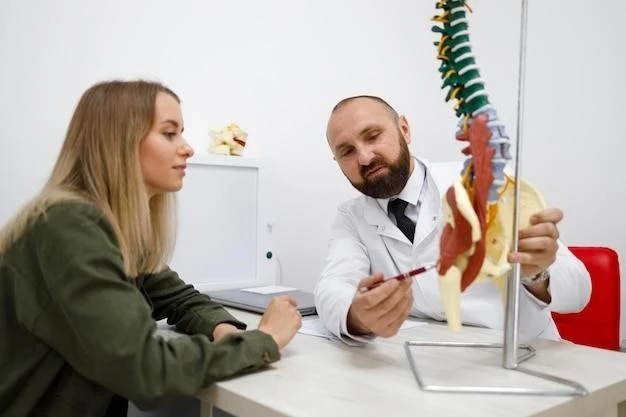Causes of Acrocephalopolydactyly
Acrocephalopolydactyly can be caused by genetic mutations or environmental factors.
Genetic Mutations
Genetic mutations in genes associated with limb development and cranial sutures can lead to Acrocephalopolydactyly, affecting the growth and formation of fingers, toes, and skull bones.
Environmental Factors
Exposure to certain environmental factors during pregnancy, such as radiation, chemicals, or infections, may contribute to the development of Acrocephalopolydactyly by interfering with normal fetal development processes.
Symptoms of Acrocephalopolydactyly
Manifestations include craniofacial abnormalities and extra fingers or toes in affected individuals.
Craniofacial Abnormalities
Craniofacial abnormalities in Acrocephalopolydactyly can include skull malformations, wide-set eyes, midface hypoplasia, and high arched palate, which require specialized medical care and interventions.
Extra Fingers or Toes
Individuals with Acrocephalopolydactyly may present with extra fingers or toes known as polydactyly, a common feature that can impact hand function and may require surgical correction to improve dexterity and aesthetics.
Diagnosis and Treatment of Acrocephalopolydactyly
Accurate diagnosis involves physical examination, medical history review, and imaging studies.
Physical Examination and Medical History
Physical examination and detailed medical history are crucial for diagnosing Acrocephalopolydactyly, assessing craniofacial features, limb abnormalities, and overall health, guiding appropriate treatment decisions and interventions.
Imaging Studies
Advanced imaging studies such as X-rays, CT scans, and MRIs play a crucial role in assessing the extent of craniofacial and limb abnormalities in Acrocephalopolydactyly, guiding treatment strategies and surgical planning.
Surgical and Non-Surgical Options
Treatment approaches for Acrocephalopolydactyly may include surgical interventions like polydactyly repair and craniosynostosis correction, as well as non-surgical options tailored to each individual’s specific needs and functional outcomes.
Genetic Inheritance of Acrocephalopolydactyly
Acrocephalopolydactyly can be inherited through autosomal dominant genetic patterns.
Autosomal Dominant Inheritance
Acrocephalopolydactyly follows autosomal dominant inheritance, meaning a single copy of the mutated gene from a parent can lead to the condition, necessitating genetic counseling for affected families.
Genetic Counseling
Genetic counseling is invaluable for families at risk of Acrocephalopolydactyly, providing information on genetic risks, family planning options, and support to help make informed decisions regarding the condition and its implications.
Surgical Interventions for Acrocephalopolydactyly
Specialized surgical procedures are employed for polydactyly repair and craniosynostosis correction.
Polydactyly Repair
Polydactyly repair involves delicate surgical techniques to correct extra fingers or toes in Acrocephalopolydactyly cases, aiming to enhance function and achieve optimal cosmetic outcomes for the patient’s hands or feet.
Craniosynostosis Correction
Craniosynostosis correction procedures are crucial in Acrocephalopolydactyly to address premature fusion of skull sutures, requiring specialized surgical interventions to reshape the skull, release pressure on the brain, and promote optimal head growth and development.
Prognosis and Complications of Acrocephalopolydactyly
Understanding the long-term outcomes and potential complications associated with the condition.
Long-Term Outcomes
The long-term outcomes of Acrocephalopolydactyly encompass the patient’s quality of life, functional abilities, and ongoing care needs, with variable prognoses depending on the severity of craniofacial and limb abnormalities.
Potential Complications
Potential complications of Acrocephalopolydactyly may include surgical risks, developmental delays, speech difficulties, and psychological impacts, requiring comprehensive care and multidisciplinary interventions to address these challenges effectively.
Research and Advances in Acrocephalopolydactyly
Exploration of current studies and emerging treatments in the field of Acrocephalopolydactyly.
Current Studies and Findings
Ongoing research focuses on understanding the genetic mechanisms and developing novel interventions for Acrocephalopolydactyly, with recent findings contributing to improved diagnostic techniques and potential future treatment modalities.
Emerging Treatments
Emerging treatments for Acrocephalopolydactyly offer promising avenues such as targeted gene therapies, advanced surgical techniques, and personalized interventions, with ongoing advancements aimed at enhancing patient outcomes and quality of life.

Support and Resources for Acrocephalopolydactyly
Access to patient support groups and specialty care centers is vital for individuals with the condition.
Patient Support Groups
Patient support groups offer valuable emotional support, information sharing, and community connections for individuals and families affected by Acrocephalopolydactyly, fostering a sense of belonging and empowerment in managing the condition.
Specialty Care Centers
Specialty care centers provide comprehensive multidisciplinary care, expert medical guidance, and tailored treatment plans for individuals with Acrocephalopolydactyly, ensuring optimal management and support for their specific healthcare needs.
